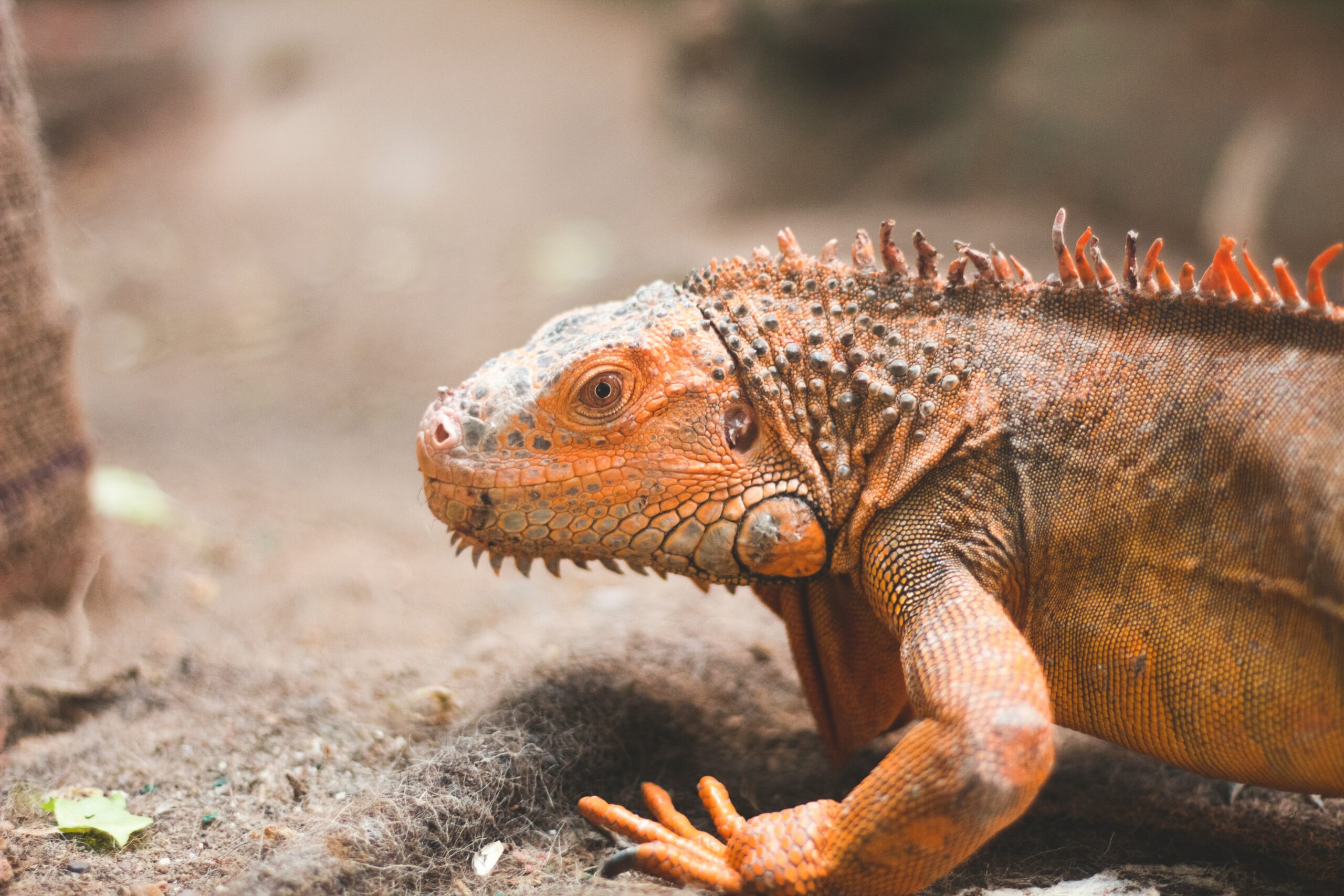Iguanas are a diverse group of lizards, known for their impressive size and distinctive features. They belong to the family Iguanidae, within the order Squamata, which also includes snakes and other lizard species. Iguanas are predominantly found in the Americas and the Caribbean, thriving in various environments such as rainforests, deserts, and coastal areas.
There are two primary types of iguanas: the Green Iguana, which is widespread throughout its range, and the Lesser Antillean Iguana, which is endemic to the Lesser Antilles. Additionally, the family includes several other species, each adapted to their unique habitat. For instance, the Marine Iguana found only in the Galápagos Islands, is adapted for life in and around the sea, an unusual trait for a lizard.
Iguanas are herbivorous, primarily feeding on leaves, flowers, and fruits. This diet plays a crucial role in their ecosystems, aiding in seed dispersal and vegetation growth. Physically, they are characterized by their stout build, long tails, and a row of spines running along their back to the tail. Some species, like the Green Iguana, display vibrant colors.
Iguanas are ectothermic, relying on their environment to regulate their body temperature. They are often found basking in the sun, which aids their digestion and overall activity levels.
Despite their robust appearance, many iguana species are facing threats from habitat loss, hunting, and invasive species. Their ecological importance and charismatic nature have made them a focus of conservation efforts and popular subjects in herpetological studies.
Types of Iguanas:
There are approximately 44 recognized types of iguanas worldwide, with a significant number of them found in the Americas. Some popular types of iguanas include the Green Iguana, Rhinoceros-Iguana, Marine Iguana, and several others. Here is a glimpse into some of the more popular species:
Green Iguana: The Green Iguana is one of the most popular pet iguanas and is native to Central and South America. They are known for their vibrant green coloration, long tails, and impressive size. Green Iguanas primarily feed on leaves, fruits, and flowers.
Rhinoceros Iguana: This Iguana derives its name from the prominent horn-like projections on its snout. They are native to the Caribbean islands and have a stocky build. Rhinoceros Iguanas are herbivores, consuming a diet consisting mainly of leaves, fruits, and flowers.
Marine Iguana: The Marine Iguana is a unique species found only in the Galapagos Islands. They have adapted to a semi-aquatic lifestyle and are the only iguanas known to swim in the ocean. Marine Iguanas primarily feed on marine algae and seaweed.
Lesser Antillean Iguana: The Lesser Antillean Iguana is native to the Lesser Antilles in the Caribbean. They exhibit various color morphs and are adept climbers. Lesser Antillean Iguanas are herbivores, consuming a diet consisting of leaves, fruits, and flowers.
Desert Iguana: The Desert Iguana is found in arid regions of North America, particularly in the southwestern United States and Mexico. They have excellent heat tolerance and are well adapted to desert environments. Desert Iguanas feed on a variety of plant material, including leaves, flowers, and fruits.
Fiji Banded Iguana: The Fiji Banded Iguana is native to the islands of Fiji and possesses distinct coloration with bright bands across its body. They are arboreal and spend much of their time in trees. Fiji Banded Iguanas primarily feed on leaves, fruits, and flowers.
Spiny-tailed Iguana: The Spiny-tailed Iguana is found in various regions of Central and South America. They have distinctive spines along their tails and are known for their agility and speed. Spiny-tailed Iguanas are omnivorous, consuming a diet of plant matter, small vertebrates, and insects.
Unique Characteristics of Iguanas:
Iguanas possess several unique characteristics that distinguish them from other lizards. One of their notable features is their ability to detach their tails as a defense mechanism, allowing them to escape from predators while the tail continues to wiggle, distracting the attacker. Iguanas are also excellent climbers, utilizing their sharp claws and strong limbs to navigate trees and other elevated surfaces.
Summary
Iguanas, with their impressive size, vibrant colors, and unique adaptations, are captivating creatures that have fascinated humans for generations. Their ability to climb trees, detach their tails, and adapt to diverse habitats showcases their remarkable evolutionary traits.
From the iconic Green Iguana to the elusive Marine Iguana of the Galapagos, each species of iguana offers a glimpse into the diversity and beauty of the reptile world.
As we continue to study and appreciate these magnificent reptiles, let us also work towards their conservation and the preservation of their natural habitats to ensure the survival of these remarkable creatures for future generations to enjoy.



































































